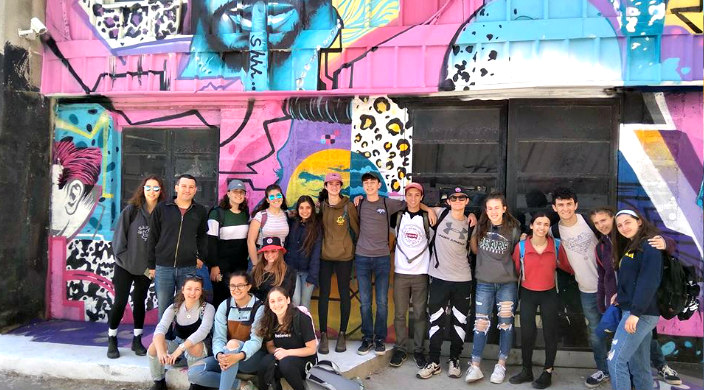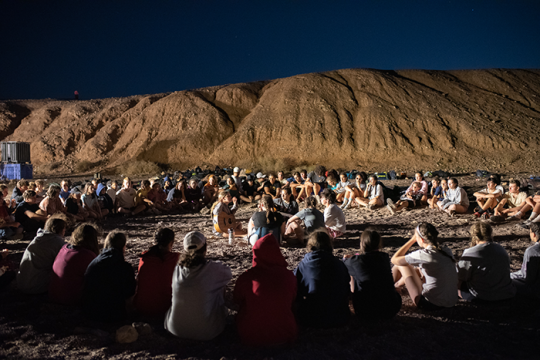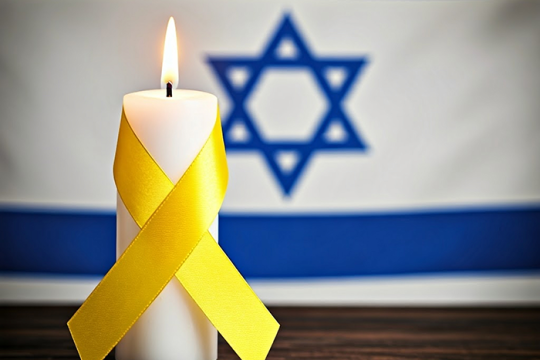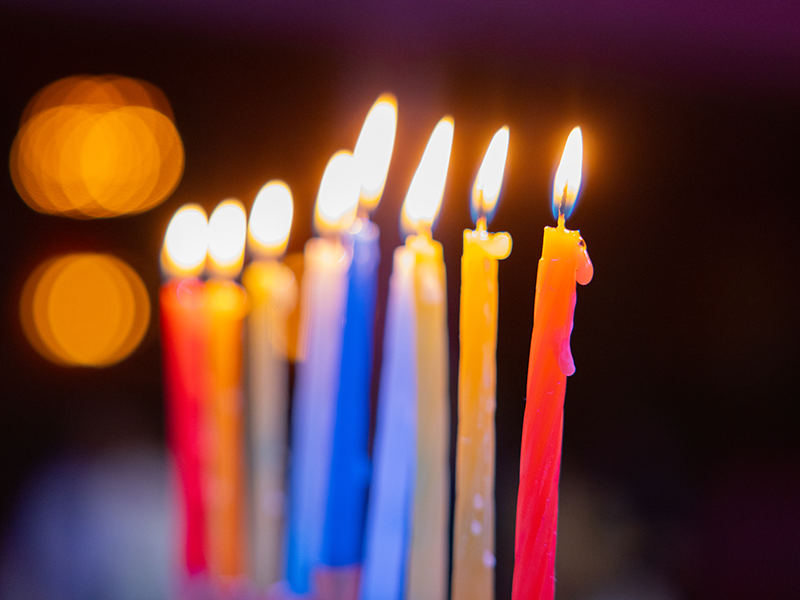
Teacher: “Class, what’s the definition of Zionism?”
Students, in unison: “Zionism is the aspiration of the Jewish people to build a Jewish democratic state in Eretz Yisrael (the Land of Israel)!”
High schoolers in the URJ Heller High study-abroad program in Israel quickly gain an understanding that Zionism is the founding ideology of the State of Israel. Next, it’s time that we take class outside and see this in action.
Going on tiyulim (trips) to understand Zionism allows us to see that the goal of having a Jewish state is actually reflected in the differing beliefs of the main Zionist leaders going back to the late 19th century.
A big highlight of this part of the curriculum is our cultural Zionism tiyul in Tel Aviv. Founded in 1909 by 60 families who left overcrowded Jaffa to build the first modern Hebrew city, today Tel Aviv is the beating cultural and economic heart of the Jewish state. Everything from the street talk to the cafes to the graffiti is imbued with the modern Hebrew language.
Our day in Tel Aviv is a great opportunity to take the language we’ve learned in the classroom and put it to use. Each student is handed a slip of paper with the slogan “Ivri daber Ivrit!” – “Jew, speak Hebrew!” This is a re-enactment of the early days of Tel Aviv, when “Hebrew cops” would go around rudely handing out these slips to anyone who was overheard speaking in anything but the holy tongue.
One of the newest additions to this tiyul is a graffiti tour of the Florentin neighborhood in south Tel Aviv. The street art is different every time we show up for another go-round. Tel Aviv, it turns out, is one of the hottest cities for international street art since its enforcement of anti-graffiti law is laxer than in other places.
In fact, street artists from all over the world have added their works to the urban landscape.
It’s interesting to consider that Theodor Herzl envisioned that Israel would be a nation-like-all-nations, where Jewish graffiti artists would draw on the walls of Jewish buildings in a Jewish neighborhood, in Jewish cities, and be fined by Jewish police. One of the murals in Florentin is of Herzl himself with the Hebrew words Lo Rotzim, Lo Tzarikh (“Don’t want it, don’t need it”), which is a commentary on Herzl’s famous Zionist slogan, Im Tirzu Ain Zo Agada (“If you will it, it is no dream”).
Another captivating mural we encountered is depiction of the ancient Temple in Jerusalem (Beit HaMikdash) painted onto the side the old neighborhood synagogue. Finally, we stood across from a large mural that was painted in the 1990s, depicting real security camera footage that captured the tragic moment of the assassination of Israeli Prime Minister Yitzhak Rabin on Nov. 4, 1995.
The most important names we hear over and over this day are Ahad Ha’am and Chaim Nachman Bialik, both leading figures in cultural Zionism.
Ahad Ha’am was actually named Asher Zvi Ginsberg, who came from a traditional Russian Jewish family. He agreed with Herzl that the creation of a Jewish state was essential for the future of the Jewish people, but he came to it from a different angle. While Herzl believed anti-Semitism to be our biggest problem, Ahad Ha’am actually asserted that assimilation and a loss of peoplehood is what challenged us. He insisted that first the Jewish people must have a national rebirth in Eretz Yisrael based on the revival of Hebrew.
Chaim Nachman Bialik took Ahad Ha’am’s vision to the next level. Often referred to as the national poet, Bialik believed that Hebrew should be the language of literature, theater, and song.
We conclude this day by debating whether Tel Aviv is a Jewish city or a city of Jews – and whether Israel is a Jewish state or a state of Jews. Up until now in the semester, we haven’t really discussed in detail what it means to be a secular Jew in Israel, which is quite different than being a secular Jew in the Diaspora.
Although a large segment of the population of Tel Aviv is made up of Jews who are not religiously observant, what does it mean for their Jewish identity to speak Hebrew as one’s native language and to live in a country where Judaism is constantly a part of public life and is the backbone of the national culture?
These are the questions that we hope our students will be thinking about after spending the day Tel Aviv.
URJ Heller High, formerly NFTY-EIE, is a semester-long program for high school students in grades 10-12 in Israel. Learn more about Heller High and read more about the Heller High curriculum on the program's blog.
David Alon is a Jewish history teacher at URJ Heller High.
Related Posts

From Ancient Ruins to Modern Marvels: 10 Must-See Sites in Israel

5 Life-Changing Reasons to Join Yallah! Israel This Summer

